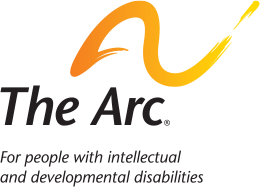A New Limit on Disability Rights Lawsuits? What the Supreme Court’s Decision in Trump v. CASA Means
Can a federal court stop the government from enforcing a harmful policy that violates people’s rights, even if those people aren’t part of a lawsuit? That’s the core question in Trump v. CASA, a U.S. Supreme Court case that could reshape how civil rights cases are handled, including those brought by and for people with disabilities.
What Is the Trump v. CASA Case About?
This case challenged whether federal courts can make a ruling that stops the federal government from enforcing a policy across the entire country. This type of ruling is called a nationwide or universal injunction and is powerful because it applies to the individuals or organizations that file a lawsuit, and it also applies to everyone affected by the policy even if they did not bring a lawsuit.
What Are the Facts of the Case?
In January 2025, President Trump issued an executive order to end birthright citizenship. It said a child born in the U.S. wouldn’t automatically become a citizen if their mother was undocumented or a temporary visitor, and their father wasn’t a citizen or lawful permanent resident. The U.S. Constitution in Section 1 of the 14th Amendment states, “All persons born or naturalized in the United States, and subject to the jurisdiction thereof, are citizens of the United States and of the State wherein they reside.”
Multiple parties including individuals, advocacy groups, and states sued the Trump Administration, arguing that the executive order violated the Constitution. Lower courts agreed that the plaintiffs were likely to win, and they issued nationwide injunctions to stop the policy from going into effect.
The Trump administration asked the Supreme Court to narrow those rulings, arguing that the courts had no authority to block the policy for people who hadn’t directly joined the lawsuits.
What Did the Supreme Court Decide?
In a 6-3 ruling, the Court did not rule on whether the new citizenship policy was unconstitutional. Rather, in a 6-3 ruling, the Supreme Court sided with the Trump Administration on whether lower courts could issue nationwide or universal injunctions. Specifically, the Supreme Court ruled that lower courts can no longer use universal injunctions to block federal policies nationwide—even if those policies are unlawful and harm large groups of people—if the injunction is broader than necessary to provide “complete relief” to the plaintiffs who brought the lawsuit. They based their ruling on the idea that federal courts didn’t issue universal injunctions back when the Constitution was written, and so they shouldn’t now.
Justice Sotomayor, joined by Justices Kagan and Jackson, strongly dissented:
“The Court’s decision is nothing less than an open invitation for the Government to bypass the Constitution. The Executive Branch can now enforce policies that flout settled law and violate countless individuals’ constitutional rights, and the federal courts will be hamstrung to stop its actions fully.”
Justice Jackson called the ruling a “seismic shock” that opens the door for the government to violate people’s rights unless they sue (and win) in court:
“[It’s] a gash in the basic tenets of our founding charter that could turn out to be a mortal wound…Make no mistake: Today’s ruling allows the Executive to deny people rights that the Founders plainly wrote into our Constitution, so long as those individuals have not found a lawyer or asked a court in a particular manner to have their rights protected. This perverse burden shifting cannot coexist with the rule of law.”
The Arc’s Position
The Arc believes that when disability rights are violated on a wide scale, courts must be able to respond with equally broad solutions. If a federal policy is found to be discriminatory, courts should be able to stop it—not just for one person, but for everyone affected. Our position statement on human and civil rights affirms that all people “are entitled to the protection and benefits of the civil rights laws of their country,” and that when those rights are violated, they are “entitled to protection and rights restoration.” Our experience shows that systemic problems require systemic fixes. Limiting the scope of court orders makes those fixes harder to achieve.
Class action lawsuits remain a vital tool, and we will continue to use them. But make no mistake: this decision narrows the path to justice.
How Does This Case Impact People With Disabilities?
This decision makes it harder for people with disabilities (and others whose rights are being violated) to get full protection from the courts.
In the past, nationwide injunctions have played a key role in stopping harmful policies in their earliest stages, including those affecting:
- Medicaid access
- Disability-based immigration restrictions
- Discrimination in public services and programs
Now, those broad protections will be harder to get. People harmed by an illegal policy will have to file their own lawsuits or wait for a class action or a Supreme Court decision, which can take years.
While the decision also prevents courts from invalidating beneficial policies for everyone based on one lawsuit, the overall impact is still negative. Federal district courts — the ones closest to communities — are now limited in how much they can do, even when they find clear violations of federal law.
The fight for civil rights continues. Courts can still hear disability rights cases, and they can still issue powerful rulings, especially in class actions. But this decision means that the first line of defense against harmful federal policies has been weakened. The Arc remains committed to pushing for broad, systemic change in the courts, in Congress, and in communities nationwide.





 It was a day full of joy, connection, and the kind of belonging that too often feels out of reach. And it all happened because a company chose to step up and demonstrate their commitment to valuing people with disabilities.
It was a day full of joy, connection, and the kind of belonging that too often feels out of reach. And it all happened because a company chose to step up and demonstrate their commitment to valuing people with disabilities. At Great American Ball Park, families got VIP treatment from the moment they arrived. They watched batting practice from the field, met Cincinnati Reds pitcher Brent Suter, and felt welcomed by every staff member they encountered. Before the first pitch, families received gift cards to buy food, thanks to the Reds Community Fund. That small act made it even easier to just enjoy the moment. Then everyone settled into an accessible seating area and watched the Reds take home a win against the Marlins.
At Great American Ball Park, families got VIP treatment from the moment they arrived. They watched batting practice from the field, met Cincinnati Reds pitcher Brent Suter, and felt welcomed by every staff member they encountered. Before the first pitch, families received gift cards to buy food, thanks to the Reds Community Fund. That small act made it even easier to just enjoy the moment. Then everyone settled into an accessible seating area and watched the Reds take home a win against the Marlins. Logan, who has autism and is non-verbal, lit up as he explored the stadium with his parents and sister
Logan, who has autism and is non-verbal, lit up as he explored the stadium with his parents and sister









